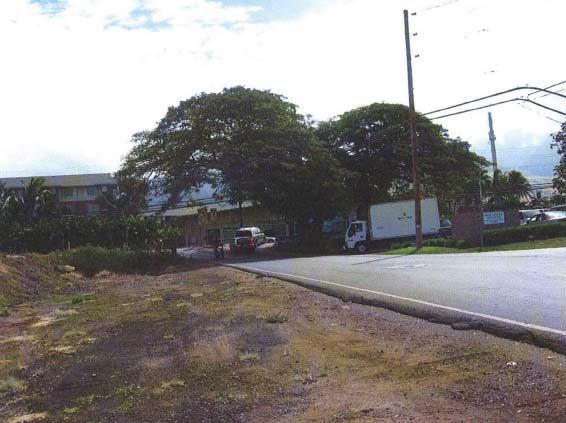Kahoma Village Project Calls for 203 Units in West Maui

Kahoma Village Project. Existing view from the project site towards Honoapiilani Highway. Photo courtesy DEA, and Munekiyo & Hiraga.
By Wendy Osher
A Final Environmental Assessment was filed with a finding of no significant impact for the proposed Kahoma Village Project in West Maui.
According to the FEA, the 203-unit project was proposed by Stanford Carr Development, on behalf of The Harry and Jeanette Weinberg Foundation.
The project is proposed for construction on 21.6 acres of land bordered by the Honoapiʻilani Highway to the east, and Front street to the west. It is also situated between the Kenui Street to the south and the Kahoma Stream and the Lahaina Cannery Mall to the north.
According to the project need section of the FEA, a Market Study concluded that the project will address future population growth and the need for housing as economic recovery occurs.

Kahoma Village Project. View across project site from Front Street towards Honoapiʻilani Highway. Photo courtesy DEA, Munekiyo & Hiraga.
The project was also developed to meet the criteria for Section 201H-38, a statute that promotes the delivery of affordable housing. Under the provision, at least 51% of the proposed units will meet the County of Maui affordable housing criteria, the document states.
The Final Environmental Assessment notes that projected construction costs are estimated at $60 million, with anticipated completion to take four years upon receipt of Section 201H-38 approval, SMA Use Permits, and other construction-related permit approvals.
Under the Historical and Archaeological Resources section of the document, the project is located in the Alamihi Ahupuaʻa, outside of the Lahaina National Historic Landmark District.
According to the FEA, an Archaeological Assessment Survey was completed for the project site in October 2011 by Xamanek Researches, LLC.
The assessment notes that the project site is currently vacant but has been previously impacted by, “sugarcane cultivation, heavy equipment clearing, construction of informal homeless shelters and camps, and piles of construction related debris.”
The document also spoke of the Alamihi Pond, which is identified on historical maps just west of the development. The previously released Draft Assessment noted that the Pond was traditionally used for mullet, but was filled in the first half of the 20th century during the Mala Wharf construction in 1922 when an access road was installed.








